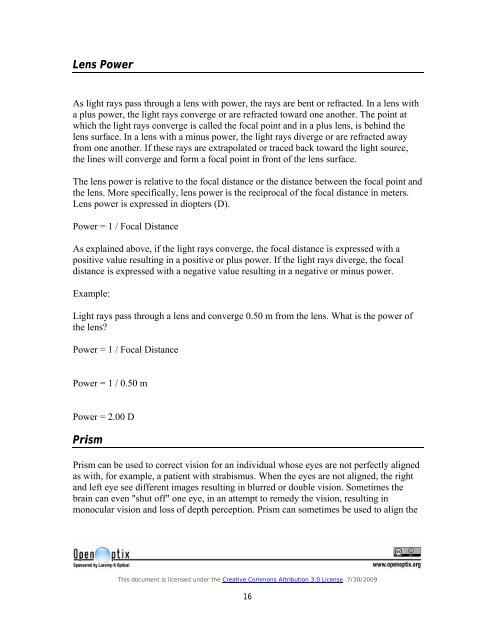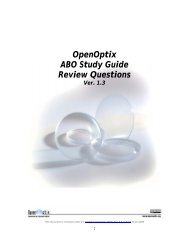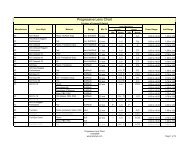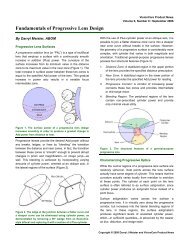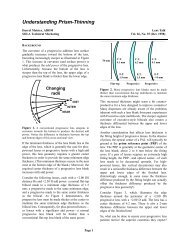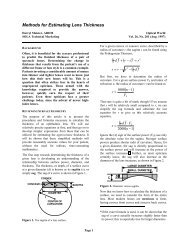OpenOptix ABO Study Guide - Laramy-K Optical
OpenOptix ABO Study Guide - Laramy-K Optical
OpenOptix ABO Study Guide - Laramy-K Optical
Create successful ePaper yourself
Turn your PDF publications into a flip-book with our unique Google optimized e-Paper software.
Lens Power<br />
As light rays pass through a lens with power, the rays are bent or refracted. In a lens with<br />
a plus power, the light rays converge or are refracted toward one another. The point at<br />
which the light rays converge is called the focal point and in a plus lens, is behind the<br />
lens surface. In a lens with a minus power, the light rays diverge or are refracted away<br />
from one another. If these rays are extrapolated or traced back toward the light source,<br />
the lines will converge and form a focal point in front of the lens surface.<br />
The lens power is relative to the focal distance or the distance between the focal point and<br />
the lens. More specifically, lens power is the reciprocal of the focal distance in meters.<br />
Lens power is expressed in diopters (D).<br />
Power = 1 / Focal Distance<br />
As explained above, if the light rays converge, the focal distance is expressed with a<br />
positive value resulting in a positive or plus power. If the light rays diverge, the focal<br />
distance is expressed with a negative value resulting in a negative or minus power.<br />
Example:<br />
Light rays pass through a lens and converge 0.50 m from the lens. What is the power of<br />
the lens?<br />
Power = 1 / Focal Distance<br />
Power = 1 / 0.50 m<br />
Power = 2.00 D<br />
Prism<br />
Prism can be used to correct vision for an individual whose eyes are not perfectly aligned<br />
as with, for example, a patient with strabismus. When the eyes are not aligned, the right<br />
and left eye see different images resulting in blurred or double vision. Sometimes the<br />
brain can even "shut off" one eye, in an attempt to remedy the vision, resulting in<br />
monocular vision and loss of depth perception. Prism can sometimes be used to align the<br />
This document is licensed under the Creative Commons Attribution 3.0 License. 7/30/2009<br />
16


